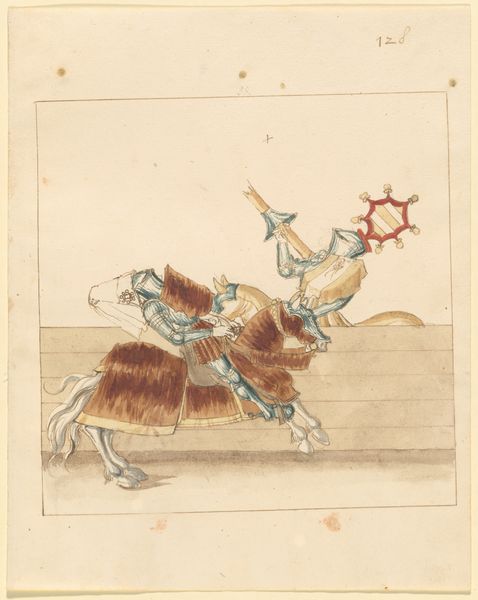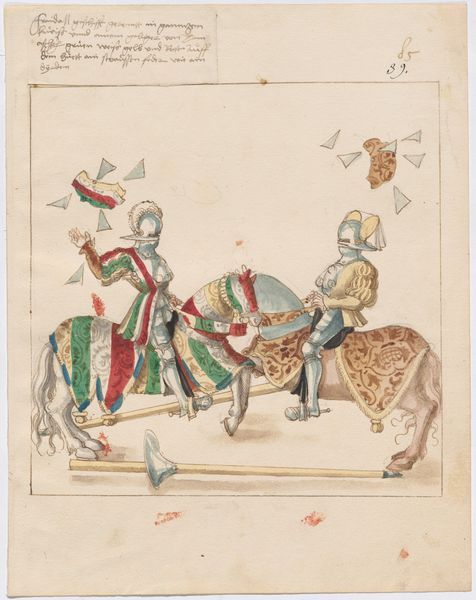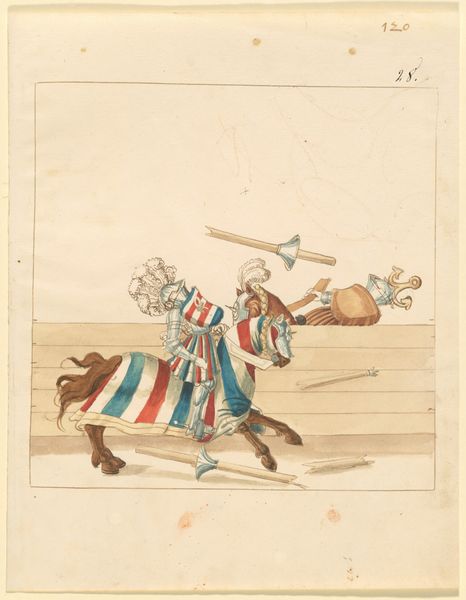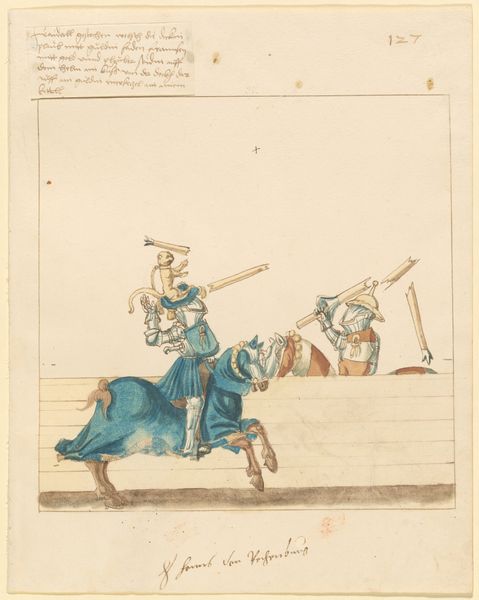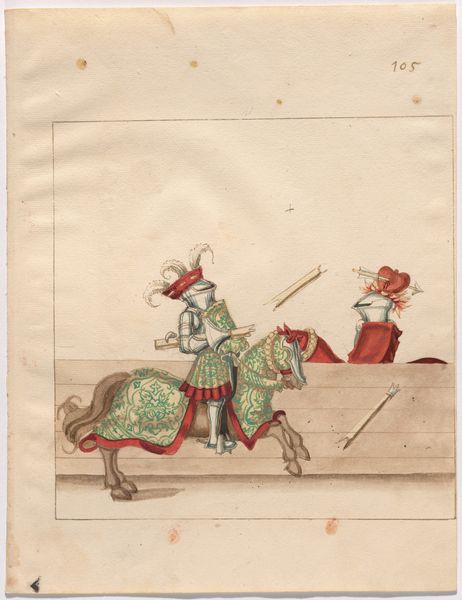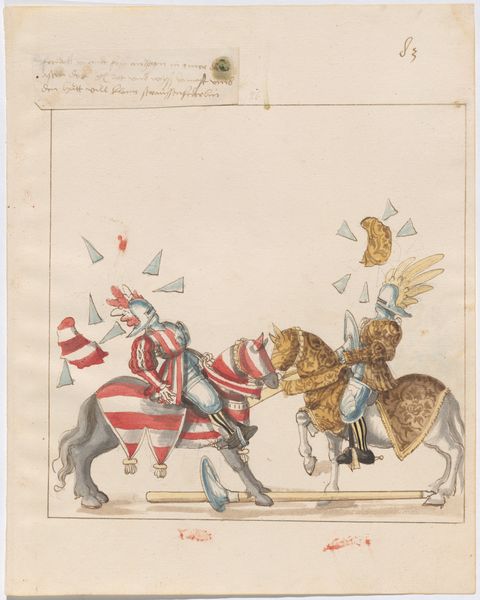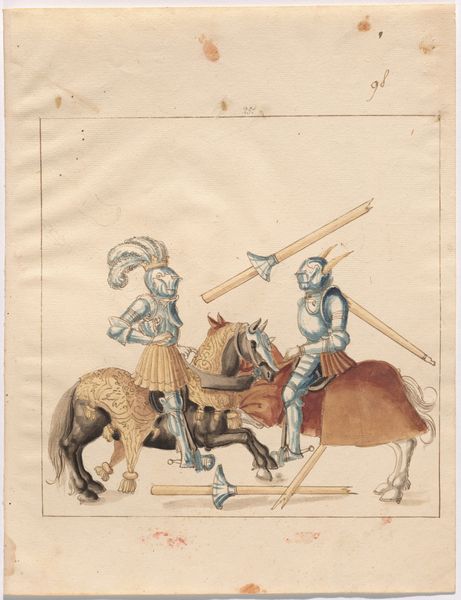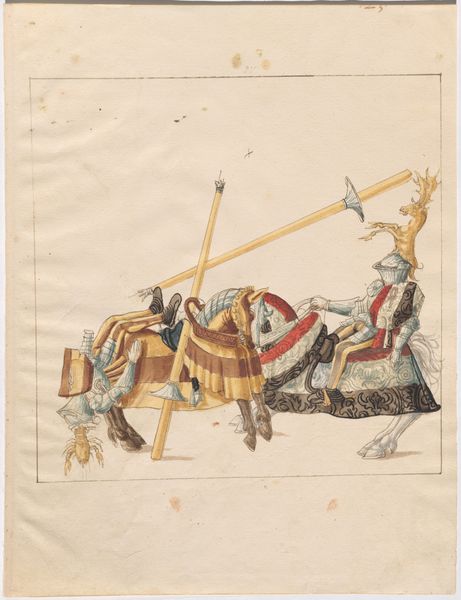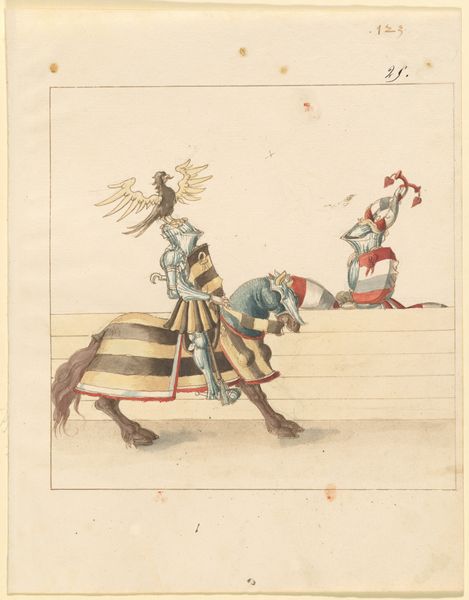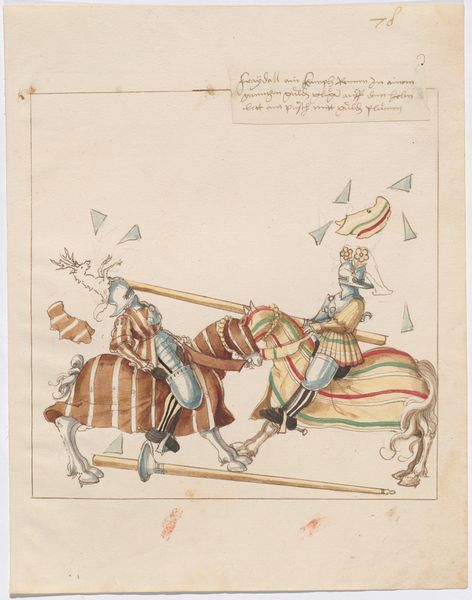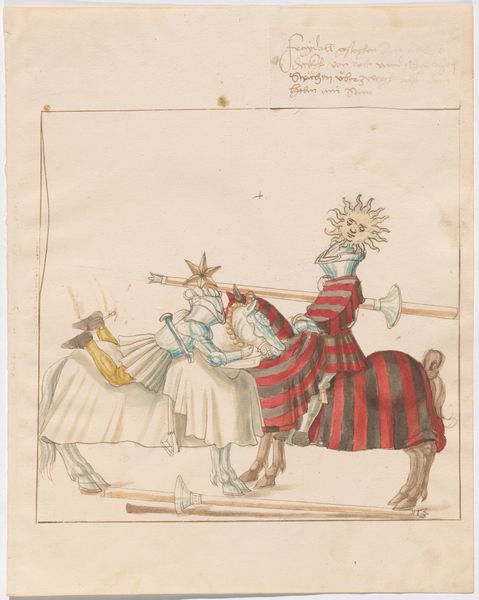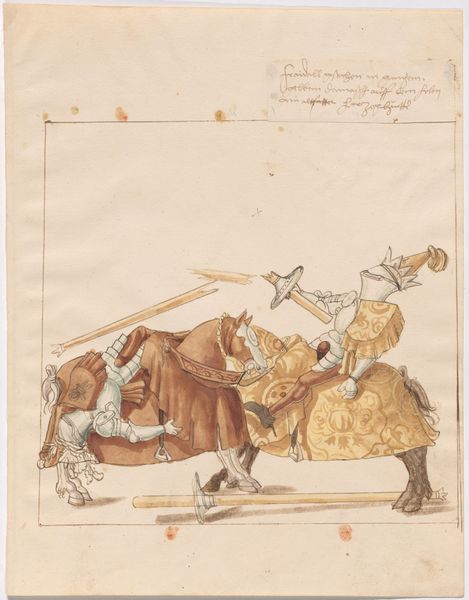
drawing, coloured-pencil
#
drawing
#
coloured-pencil
#
narrative-art
#
figuration
#
11_renaissance
#
coloured pencil
#
history-painting
#
italian-renaissance
Dimensions: sheet: 33.1 × 26.2 cm (13 1/16 × 10 5/16 in.)
Copyright: National Gallery of Art: CC0 1.0
Editor: Here we have an intriguing colored pencil drawing titled "Italian Joust of Peace," created around 1512-1515 by an anonymous artist during the Italian Renaissance. It feels… oddly lighthearted for a jousting scene. What catches your eye in this piece? Curator: My attention is drawn to the swan crest adorning the jouster's helmet. In the Renaissance, swans often symbolized purity, grace, and light, but also solitude. Do you see any tension between this imagery of grace and the inherently violent act of jousting? Editor: I hadn't considered that! I was focused on the red, white, and blue stripes – almost like a flag – adorning the horse, thinking it symbolized some kind of...patriotism, maybe? Curator: Possibly, but those colors and patterns could be symbolic of allegiance to a particular house, family, or ideal rather than nationalism. Think about what red, white, and blue represented symbolically during that era, independent of modern associations. How might viewers have interpreted them? Editor: That's interesting... red for courage, white for purity, blue maybe for loyalty? Seeing the fallen jouster – almost comical in defeat – alongside that swan crest makes the drawing seem more about ideals than about warfare itself. Curator: Precisely! And consider the joust as a ritual performance. It isn't just about the clash of lances, but the theatrical display of values. What lasting messages do you think such staged performances were intended to transmit? Editor: Maybe it’s a reminder that even in conflict, certain virtues or principles should prevail. Thanks, I'm definitely seeing layers here I completely missed at first glance! Curator: Indeed. Visual symbols serve as potent tools for shaping memory and communicating cultural continuity, transcending even the immediacy of the event itself.
Comments
No comments
Be the first to comment and join the conversation on the ultimate creative platform.
